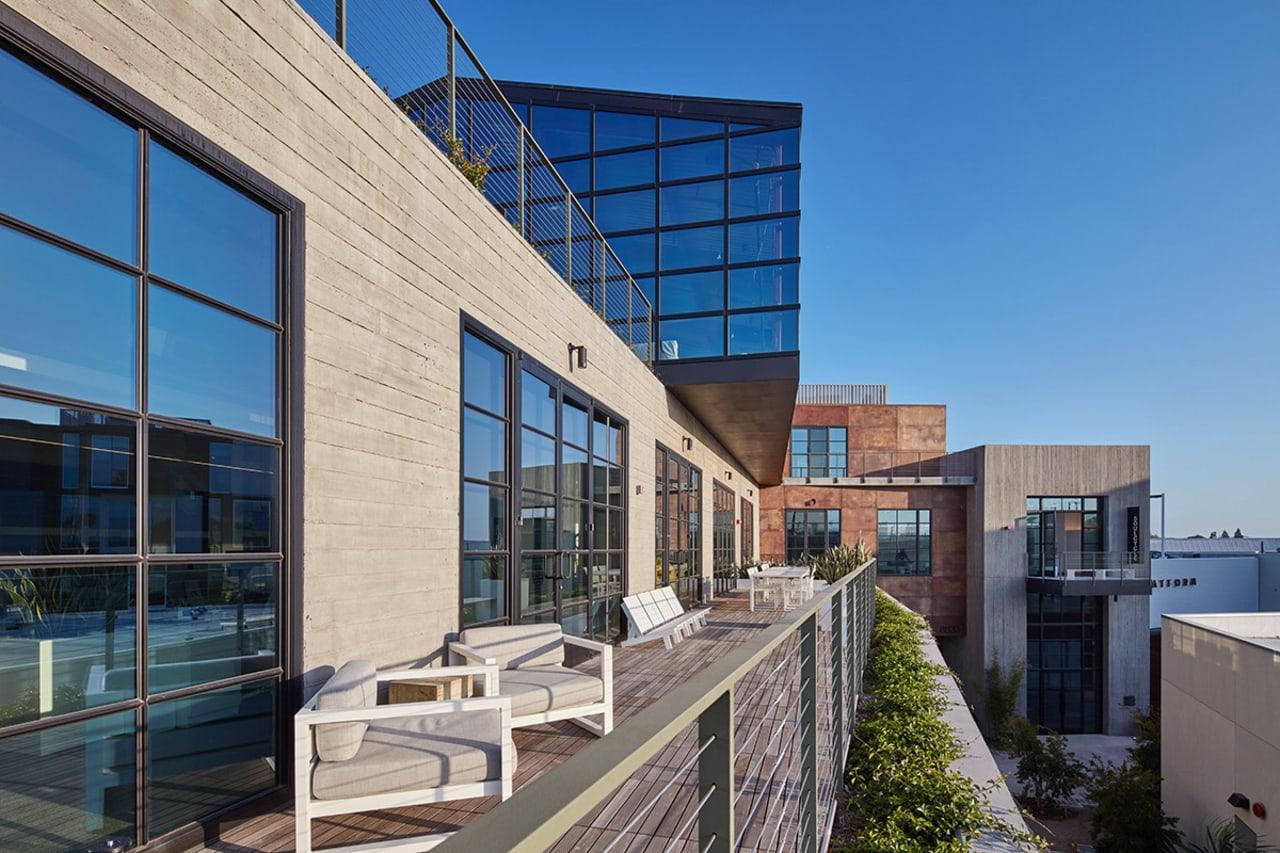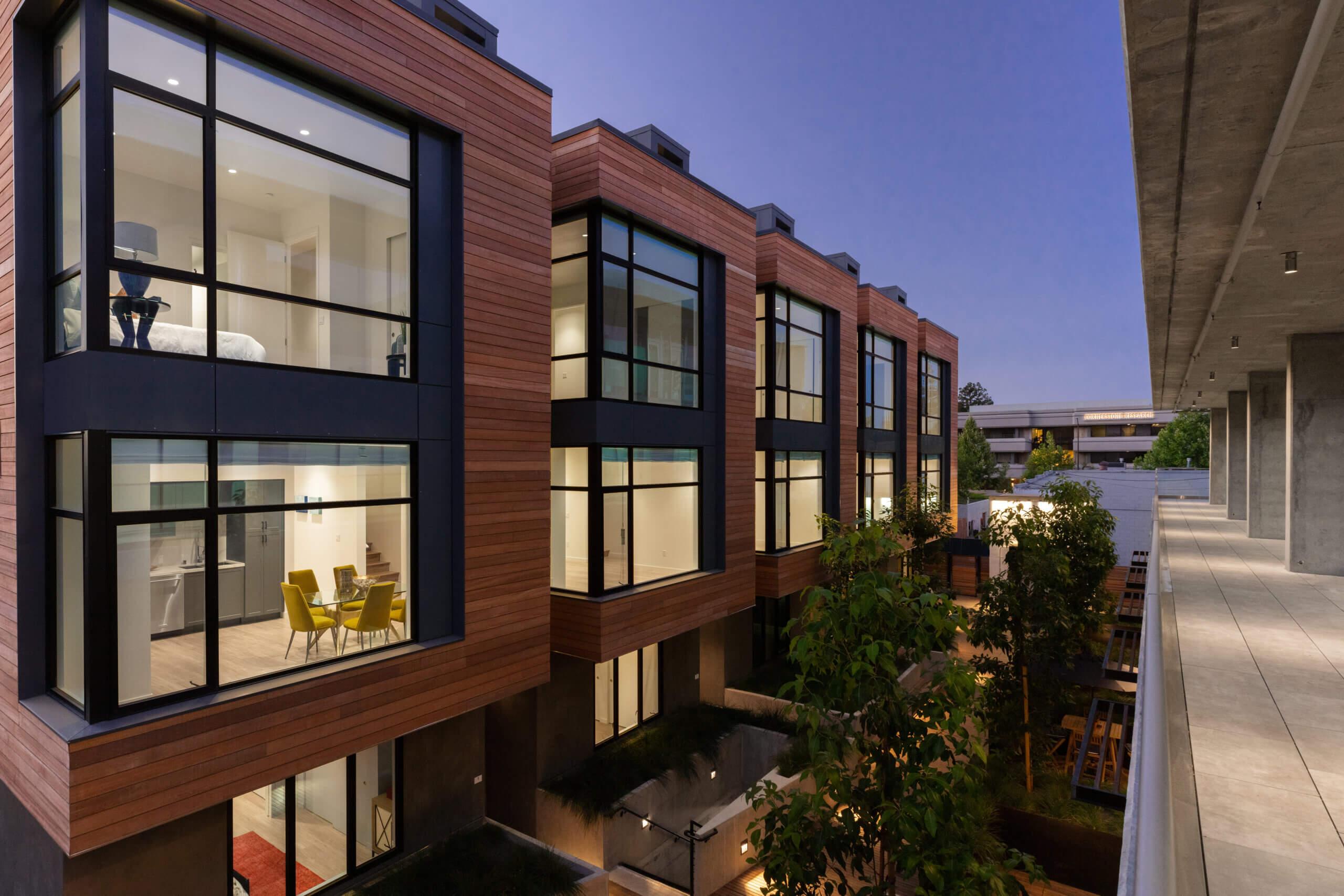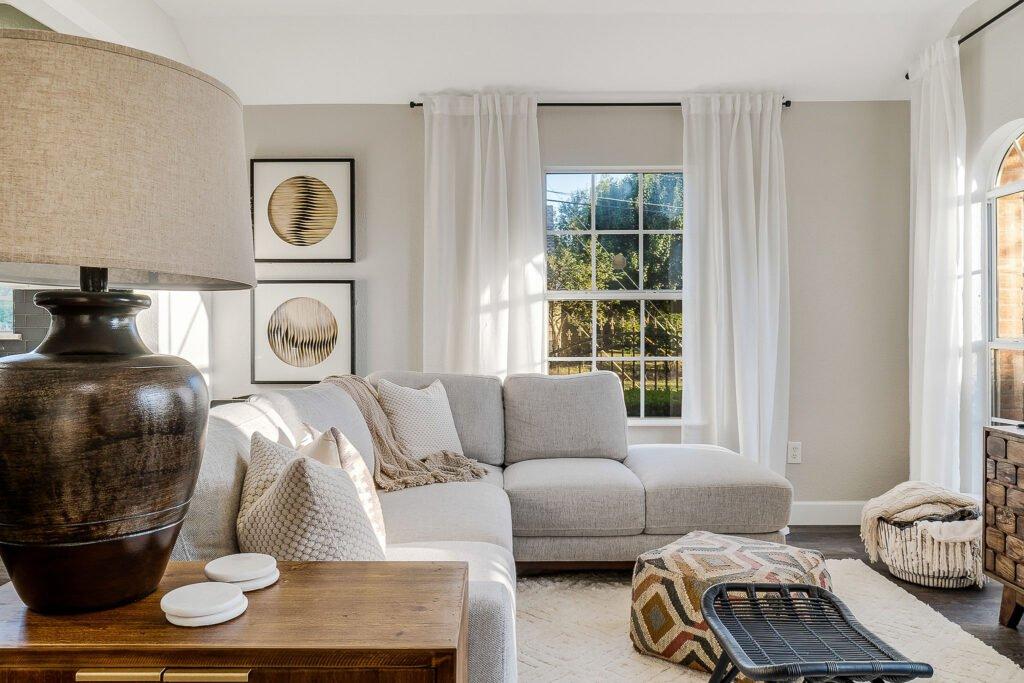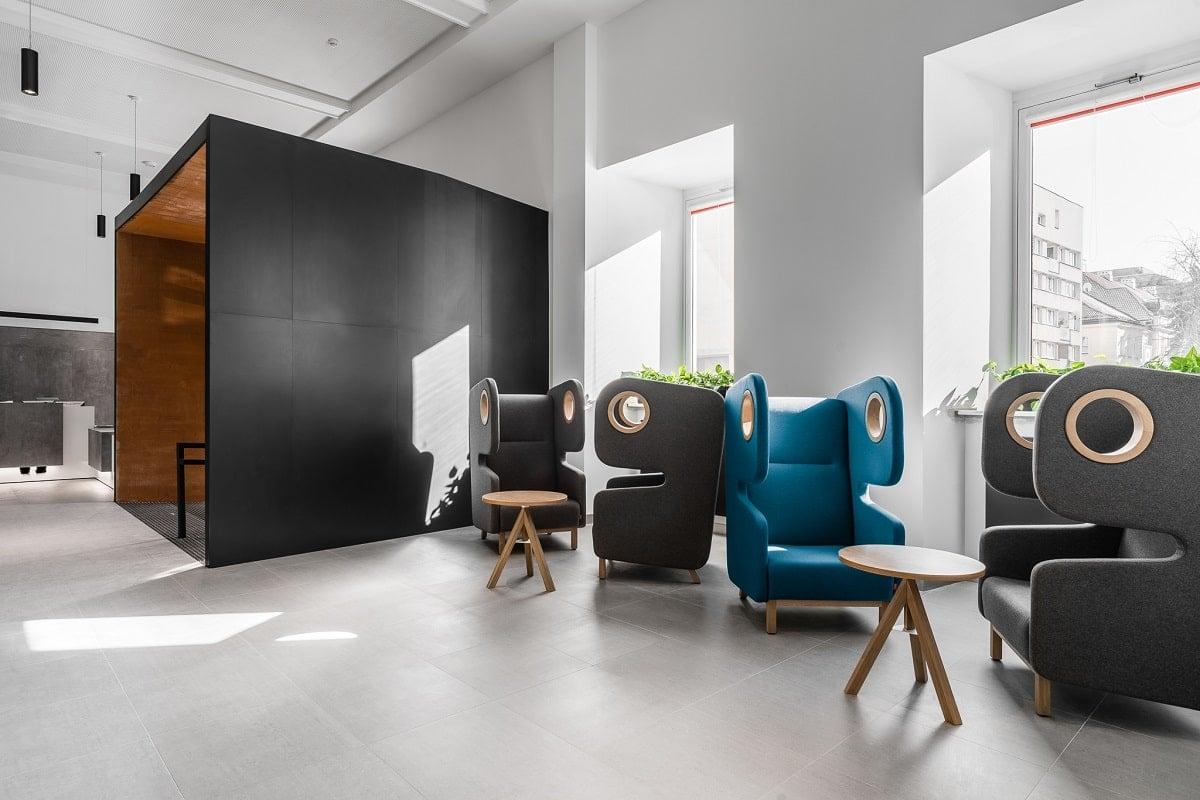In the wake of a global pandemic that reshaped how we live and work, the landscape of commercial real estate is undergoing a profound transformation. Multi-use commercial spaces, once a niche concept, have surged to the forefront as businesses and communities seek flexible, adaptive environments that cater to evolving needs. This new era is characterized by innovative designs that blend retail, office, and social spaces, creating dynamic hubs where function meets experience. Exploring the trends shaping these versatile venues offers insight into how post-pandemic realities are redefining the future of commerce and interaction.
Table of Contents
- Emerging Design Innovations Shaping Multi-Use Commercial Spaces
- Adapting to Hybrid Work Models with Flexible Layouts
- Incorporating Health and Safety Features for Enhanced Occupant Well-being
- Leveraging Technology to Optimize Space Utilization and Connectivity
- Strategic Recommendations for Future-Proofing Multi-Use Developments
- Frequently Asked Questions
- In Retrospect

Emerging Design Innovations Shaping Multi-Use Commercial Spaces
In the wake of the global shift toward flexibility and resilience, commercial spaces are evolving beyond their traditional roles. Designers are pioneering adaptive layouts that effortlessly transform to accommodate a blend of work, leisure, and retail activities. This fluidity is not just about space optimization but about fostering dynamic environments where functionality meets experience.
Biophilic design is making a powerful comeback, integrating natural elements to enhance well-being and productivity. From living walls to indoor gardens, these green interventions create tranquil, inviting atmospheres that counterbalance the urban hustle. The use of sustainable materials and natural light further reinforces this trend, emphasizing a connection to nature that benefits occupants on multiple levels.
Technological integration plays a pivotal role in these innovations. Smart sensors, modular furniture with embedded power sources, and augmented reality wayfinding systems are just a few examples enhancing user interaction and space efficiency. This tech-driven approach ensures that multi-use spaces remain agile, adapting in real-time to the needs of diverse users.
- Modular partitions: Easily reconfigurable walls that create private or open areas.
- Hybrid zones: Seamlessly blending co-working hubs with retail and social lounges.
- Touchless technologies: Elevators, doors, and check-ins designed for hygiene and convenience.
| Innovation | Benefit | Example |
|---|---|---|
| Dynamic Furniture | Flexibility & Comfort | Foldable desks and chairs |
| Green Roofs | Environmental & Thermal Regulation | Urban garden terraces |
| IoT Integration | Real-Time Space Management | Occupancy sensors |
Adapting to Hybrid Work Models with Flexible Layouts
In the wake of evolving workplace dynamics, commercial spaces have transformed into chameleons, effortlessly shifting to accommodate a blend of onsite and remote work. Companies are no longer confined to rigid layouts; instead, they embrace fluid, multi-functional environments that support collaboration, focus, and spontaneity. This adaptability is key to meeting the diverse needs of hybrid teams, where the ebb and flow of office presence demands more than traditional desks and cubicles.
Flexible floor plans often feature modular furniture, movable partitions, and versatile meeting pods that can be reconfigured on a whim. This design philosophy empowers employees to choose spaces tailored to their tasks-whether that’s a quiet nook for deep focus or an open lounge for brainstorming sessions. Such versatility not only maximizes square footage but also fosters a culture of autonomy and innovation.
- Hot-desking zones: Encourage sharing and reduce unused space.
- Hybrid meeting rooms: Equipped with advanced AV tech for seamless virtual collaboration.
- Wellness corners: Spaces designed for relaxation, mindfulness, or brief physical activity.
- Storage solutions: Lockers and personal storage to support flexible attendance.
| Feature | Benefit | Example |
|---|---|---|
| Modular Desks | Easy reconfiguration for various team sizes | Desks on wheels, foldable surfaces |
| Tech-Enabled Meeting Pods | Supports hybrid meetings without distractions | Soundproof glass pods with video conferencing |
| Multi-Purpose Lounges | Encourages informal collaboration and relaxation | Convertible seating and writable walls |

Incorporating Health and Safety Features for Enhanced Occupant Well-being
Modern commercial spaces are evolving beyond mere functionality to prioritize the holistic well-being of their occupants. This shift is reflected in the integration of cutting-edge health and safety features that ensure a comfortable and secure environment. From advanced air purification systems to touchless technology, these enhancements are becoming indispensable in creating spaces where people feel both safe and valued.
Key innovations driving occupant well-being include:
- High-efficiency particulate air (HEPA) filtration combined with UV-C light sterilization to reduce airborne pathogens
- Smart sensors that monitor indoor air quality and adjust ventilation dynamically
- Hands-free entryways and automated fixtures to minimize surface contact
- Ample natural lighting paired with biophilic design elements to improve mental health
These features not only address immediate health concerns but also foster long-term wellness by enhancing air quality, reducing stress, and promoting cleanliness. The implementation of real-time monitoring dashboards allows facility managers to track environmental data and respond promptly to any deviations, thereby maintaining optimal conditions consistently.
| Feature | Benefit | Technology |
|---|---|---|
| Touchless Controls | Reduced germ transmission | Infrared sensors, motion detectors |
| Air Quality Monitoring | Better respiratory health | IoT-enabled sensors |
| UV-C Sterilization | Pathogen elimination | Ultraviolet lamps |
| Natural Ventilation | Improved mood & focus | Smart window systems |
Leveraging Technology to Optimize Space Utilization and Connectivity
In today’s rapidly evolving commercial landscape, technology acts as the backbone for maximizing every inch of space while enhancing connectivity among tenants and visitors. Smart sensors and IoT devices are now integral, providing real-time data on foot traffic, occupancy rates, and environmental conditions. This data-driven approach allows property managers to dynamically adjust layouts, optimize energy consumption, and even predict maintenance needs before they become disruptive.
Integration of advanced communication platforms ensures seamless interaction within multi-use environments. Tenants can easily book shared conference rooms, reserve communal amenities, or coordinate deliveries through centralized apps, fostering a sense of community while reducing friction. These platforms often feature AI-driven recommendations, suggesting the best times for collaboration or quiet work, tailored to individual preferences and overall building activity.
Technology-driven features commonly found in modern multi-use spaces include:
- Automated climate control tailored to occupancy patterns
- Interactive digital directories and wayfinding tools
- Contactless access and security systems
- Virtual collaboration zones with augmented reality tools
| Technology | Benefit | Example |
|---|---|---|
| IoT Sensors | Optimize space usage | Adjust lighting & HVAC based on occupancy |
| Smart Booking Apps | Enhance tenant experience | Reserve shared amenities instantly |
| AI Analytics | Predictive maintenance & planning | Reduce downtime and costs |
By harnessing these technologies, commercial spaces evolve into adaptive environments that not only meet the diverse needs of post-pandemic users but also future-proof investments through sustainable and intelligent design. The result is a vibrant ecosystem where space is more than just square footage-it’s a dynamic resource optimized for connection, productivity, and well-being.

Strategic Recommendations for Future-Proofing Multi-Use Developments
Embracing flexibility remains a cornerstone in the design and operation of commercial spaces that cater to diverse uses. Developers should prioritize modular infrastructure that allows for seamless reconfiguration-whether transforming retail areas into co-working hubs or adapting office layouts to accommodate hybrid work models. This adaptability ensures that spaces remain relevant amid shifting market demands and consumer behaviors.
Incorporating technology-driven solutions is equally vital. Smart building systems that optimize energy consumption, monitor occupancy, and provide real-time data analytics can enhance operational efficiency while improving user experience. Integrating IoT platforms also paves the way for tailored services, from personalized climate control to contactless access, aligning with post-pandemic preferences for safety and convenience.
Community engagement should no longer be an afterthought but a strategic priority. By creating inclusive environments that foster social interaction and local collaboration, multi-use developments can build loyalty and vibrancy. This can be achieved through:
- Hosting regular pop-up markets and cultural events
- Designing communal spaces that encourage spontaneous gatherings
- Partnering with local businesses and artists for dynamic programming
| Strategy | Benefit | Implementation Tip |
|---|---|---|
| Modular Design | Adaptability to changing uses | Use movable walls and multipurpose furniture |
| Smart Building Tech | Energy efficiency and user comfort | Install sensors and automated controls |
| Community-Centric Programming | Increased foot traffic and loyalty | Engage local groups for event planning |
Frequently Asked Questions
Q: What does “multi-use commercial space” mean in the context of post-pandemic trends?
A: Multi-use commercial space refers to properties designed or adapted to serve multiple functions simultaneously or flexibly-such as combining retail, office, dining, entertainment, and even residential uses within a single development. Post-pandemic, the emphasis is on versatile environments that can quickly pivot to meet changing needs.
Q: How has the pandemic influenced the design and utilization of commercial spaces?
A: The pandemic accelerated the demand for flexibility and adaptability. Spaces are now designed with modular elements, enhanced ventilation, and touchless technology. Businesses seek spaces that can easily transform-for example, a showroom turning into an event space or shared offices adjusting to hybrid work models.
Q: Why are mixed-use developments gaining popularity after the pandemic?
A: Mixed-use developments offer convenience and resilience. By integrating living, working, shopping, and leisure in one area, they reduce the need for travel and foster community engagement. This synergy appeals to tenants and consumers looking for dynamic, safe environments that support diverse activities.
Q: What role does technology play in shaping multi-use commercial spaces today?
A: Technology is the backbone of modern multi-use spaces. Smart building systems optimize energy and air quality, while apps facilitate space booking, contactless payments, and real-time occupancy monitoring. These tech solutions enhance user experience and operational efficiency.
Q: Are there any emerging challenges linked to multi-use commercial spaces post-pandemic?
A: Certainly. Balancing the needs of varied occupants can be complex, requiring careful planning to avoid conflicts in noise, privacy, or security. Additionally, maintaining health protocols and adapting to evolving regulations remains an ongoing challenge.
Q: How are businesses and developers responding to these evolving trends?
A: Many are embracing creative partnerships and innovative leasing models to attract diverse tenants. There’s a growing focus on community-centric programming and sustainability, aiming to create vibrant hubs that serve multiple purposes while supporting well-being and environmental goals.
Q: What might the future hold for multi-use commercial spaces as society moves beyond the pandemic?
A: Expect continued evolution toward adaptable, human-centered environments that blend digital and physical realms. Spaces will likely become even more integrated into daily life, prioritizing flexibility, wellness, and connectivity-shaping how we live, work, and play in a post-pandemic world.
In Retrospect
As the dust of the pandemic continues to settle, multi-use commercial spaces are not merely recovering-they are evolving. Blending flexibility with innovation, these spaces reflect a new era where adaptability reigns supreme and community connection is paramount. Whether repurposed for work, leisure, or collaboration, the future of commercial real estate is a dynamic tapestry woven from the lessons of a world transformed. In embracing these trends, businesses and developers alike have the opportunity to craft environments that are as resilient as they are inspiring, setting the stage for a post-pandemic landscape where space truly works for everyone.

